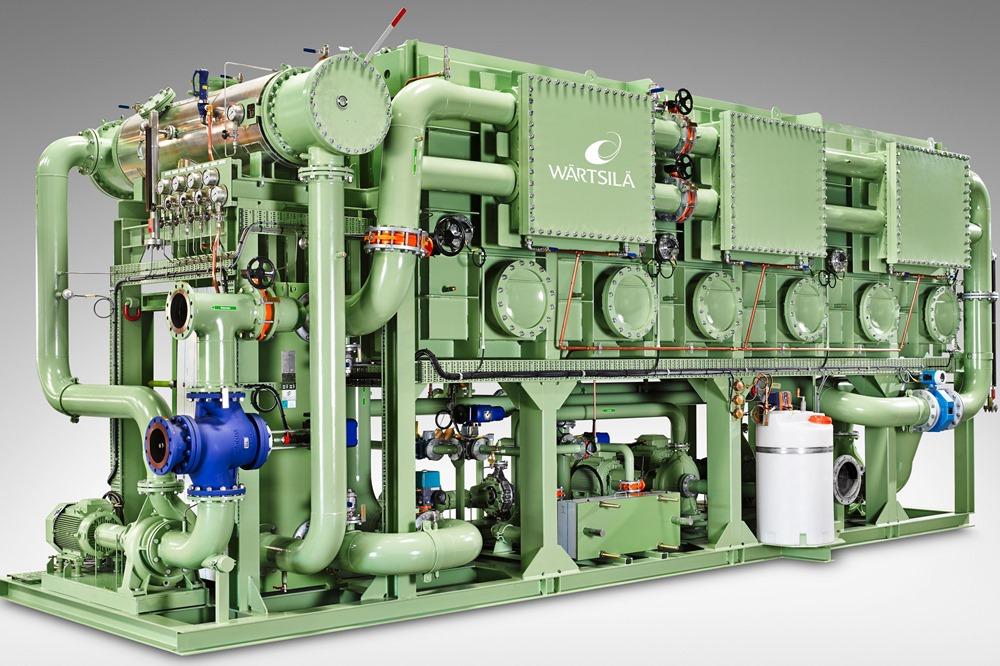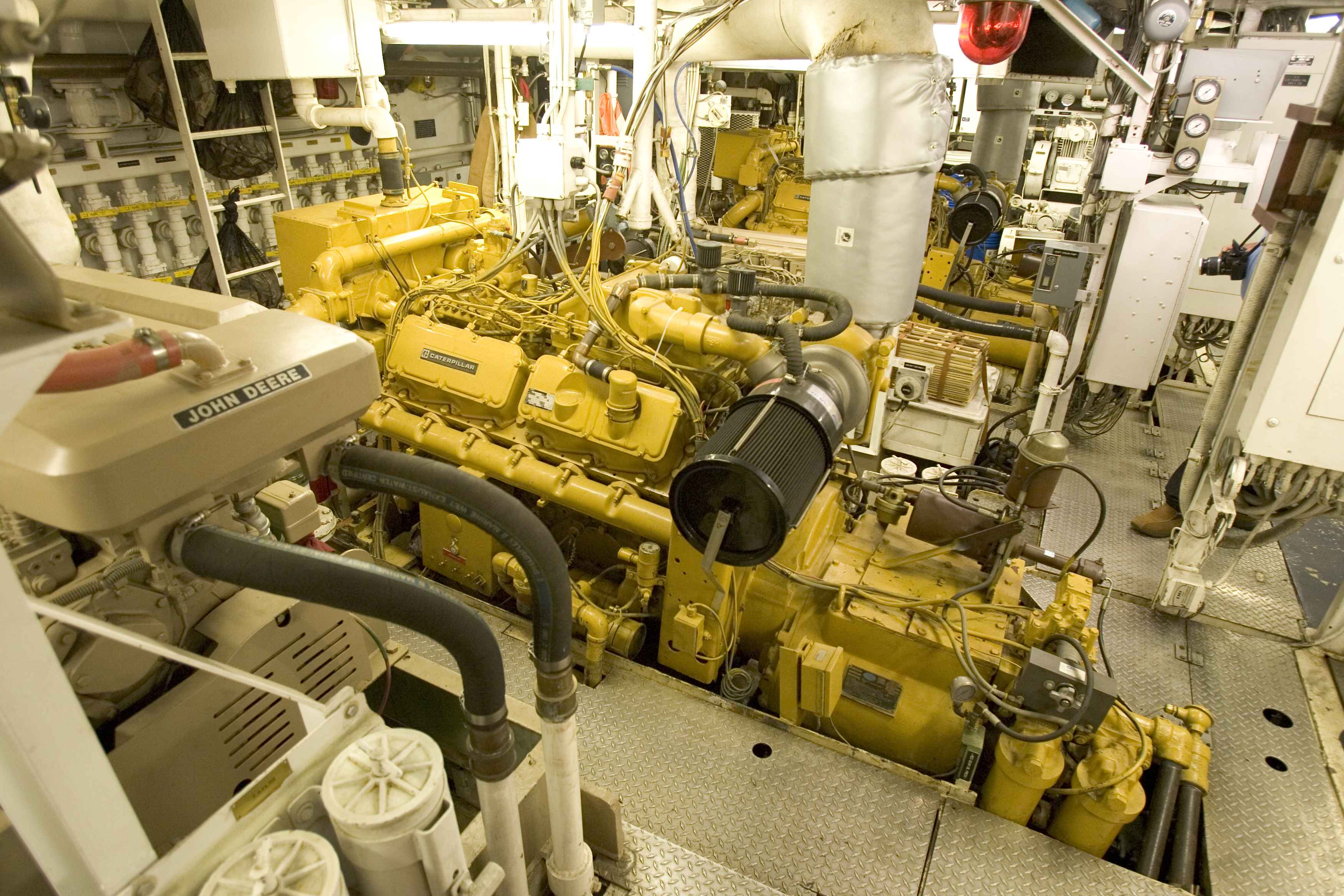Table Of Content

This results in fewer cabins and a resulting reduction in guest capacity. The use of this fuel provides clear advantages over other fuels. However, there are alternatives that could potentially be other fuel sources. It is also the only scalable solution offering a significant reduction in emissions. LNG consists of natural gasses being pumped out of the earth’s core (CH4 or methane) and cooled to -260°F, turning them into liquefied natural gas. This system allows gas to be stored easily and transported to different locations.
Factors Considered in Engine Selection for Cruise Ships
ABB supplied the vessel's power and electric propulsion systems, as well as the Octopus (smart energy management system). While mechanical propulsion is optimized for a single-speed, electric propulsion is based on rotating speed control resulting in energy efficiency at all speeds. ABB's propulsion also improves passenger comfort as the ship runs much more quietly and smoothly.
LNG-Powered Engines
Moving the ship through the water takes up the vast majority of a ship's need for power -- somewhere in the vicinity of 85 percent of the power a diesel electric plant produces goes to the propeller. The rest goes toward keeping the lights on and the passengers and crew comfortable. Using LNG to power large cruise ships is a relatively new (2016) concept. Due to LNG tanks' large sizes, this fuel is used usually on smaller passenger shipping vessels (ferries) operating on short crossing itineraries. Compared to other fuels (including MGO / marine gas oil), LNG is purer (no unburned residues, fewer greenhouse gases), more efficient, stable and cheaper (reduces fuel costs).
Fuel Efficiency
Hybrid electric systems work by utilizing batteries or energy storage systems to store electricity generated by the combustion engine or through shore power connection. This stored energy can then be used when operating at low speeds or during port stays, reducing the need for the combustion engine and resulting in quieter and cleaner operations. Furthermore, advancements in engine technology continue to improve the performance and reliability of LNG-powered engines. Engine manufacturers are developing innovative solutions to optimize combustion efficiency, enhance system integration, and improve overall engine control for LNG-powered vessels.
World's largest cruise ship sets sail, bringing concerns about methane emissions - Reuters
World's largest cruise ship sets sail, bringing concerns about methane emissions.
Posted: Sun, 28 Jan 2024 08:00:00 GMT [source]
So, hop aboard as we embark on a journey to uncover the fascinating world of cruise ship engines and their role in ensuring the smooth and enjoyable sailing experience for passengers. So, how does fuel play a part in powering the engine and the cruise ship? An engine generates electricity to the propellers by supplying power the propulsion motors. Most likely fuel and ignition (besides the steamboat example from before). On a side note, if the thought of diesel in the ocean disturbs you, there is some good news! Thankfully, more and more environmentally friendly options are appearing for cruise ships.
Icon of the Seas
It is solvable by the use of either an external prime mover or a damper winding. An external prime-mover rotates the rotor to a speed close to synchronous speed after which DC is available for magnetic locking. The other lower voltage ship loads are also supplied from the HV busbar through step-down transformers thus eliminating the need for additional gensets and reducing costs. The 440V section takes care of most of the engine-room machinery loads such as pumps, compressors and fans. In addition, deck machinery and hotel loads are also supplied by it.

Gas Turbine Engines
They work the same way that diesel-electric propulsion systems do, and the heat that the turbines generate is often used for onboard electricity. This type of engine provides enough electricity to move the ship’s propellers and power the cruise ship’s appliances, lights, air conditioning, etc. Most ships will contain several engines connected to their generator. Cruise companies employ new technologies in order to reduce fuel consumption.
Future Fuel: What Is an LNG-Powered Cruise Ship?
If the generators fail to work during an emergency, cruise ships have an emergency battery backup to power the most critical systems for up to 24 hours. Although you might envision the engine room as a massive open room running the ship’s length, the lower decks are divided into several water-tight compartments. One compartment may house the cruise ship water fresh water systems, another for the main engines, and another for the air conditioning. Speed affects cruise ship fuel consumption because to go faster, vessels must increase the electricity flow to motors. Thus more engines are employed, and it, in turn, increases fuel consumption. For example, Queen Mary 2 consumes 237 tons MGO and 261 tons HFO a day when at full speed.
What Happens to the Heat From a Cruise Ship’s Engine?
This type of propulsion was pioneered by ABB in the late 1980s and has gone on to become a popular choice amongst passenger ship owners. It has become popular as AZIPOD, a name which has become synonymous with this type of propulsion, somewhat like XEROX for photocopiers. The variable speed and torque requirements for the PEMs are handled by the convertors which convert fixed voltage and frequency to variable voltage and frequency for propulsion needs. In normal conditions, the emergency switchboard is supplied from the main bus bar. When there is a loss of main power, the supply breakers open and the emergency DG starts and takes over the supply to the ESB.
Explosion in cruise ship engine room sparks mass evacuation - The Independent
Explosion in cruise ship engine room sparks mass evacuation.
Posted: Thu, 19 Oct 2023 07:00:00 GMT [source]
You guessed it, most heavyweights, such as engines, are found as low as possible in the lower decks, ground zero. The structural keel is the most closes to the bottom of the vessel and the ship’s wide hull. It runs the length of the vessel down its centerline and in most ships, you won’t have to go far to find the engine rooms. Aside from housing generators and engines, pumps and heat exchangers are located here to cool the engine and stabilize motors and fins, in addition to the bow thruster system. Since equipment depends on electricity, modern ships contain backup generators on the outside of the main engine room in the event of a fire. Even ships with two engine rooms can suffer power failure if the electrical cables are not truly redundant.
The LNG tanks' location is in the upper deck area (right below the funnels). The motor is inside the sealed pod and connected to the propeller. Azipod cruise ship propulsion system is situated outside the hull in the aft of the ship. Azipod turns in all directions (360 degrees) by a rudder, providing thrust in any directions, not possible for conventional systems. With the increase in cruise lines adopting LNG technology, the industry is working toward its objective of having zero-emission operations.
These engines will ensure the giant new class vessel is fully powered as over 7,000 passengers and crew are busy on board working or enjoying. The ECDIS allows for navigation of the ship without the need of traditional paper charts. Navigation can be done manually, automatically, or through the Navigation and Command System (NACOS). Even advances in the underwater hull are helping to make new cruise ships more efficient. Royal Caribbean's Quantum of the Seas, Norwegian Bliss and Celebrity Edge are using thousands of tiny air bubbles underneath the hull to gain more efficiency.
But if you’re a light sleeper, accommodations near the engine room are among the worst cabins on a cruise ship. The generators can operate critical navigation systems, emergency lights, and other vital equipment. Diesel-electric engines are popular because of their ease of control, low noise, minimal vibration, and relatively compact size compared to other forms of propulsion.

No comments:
Post a Comment